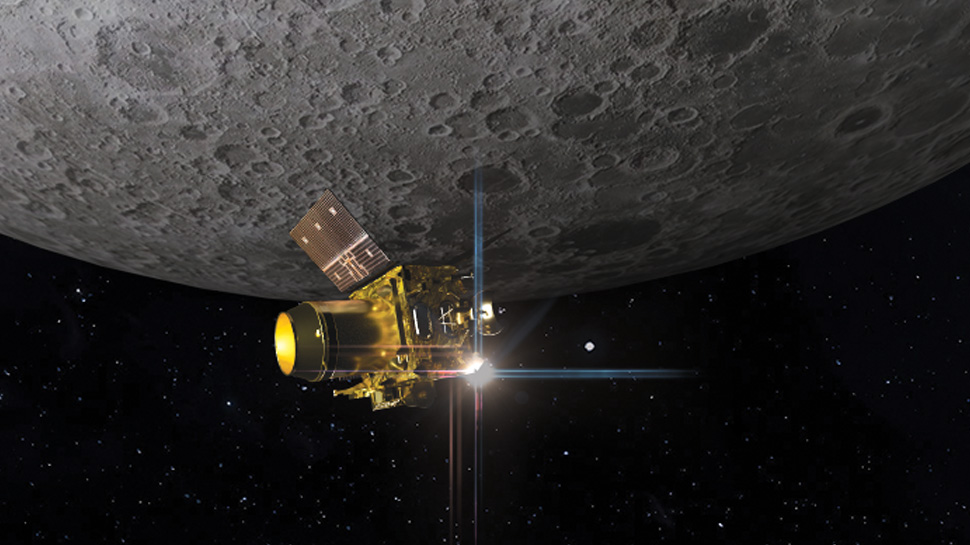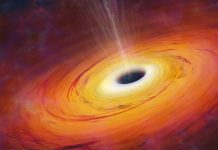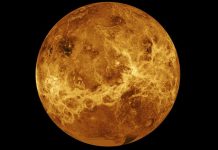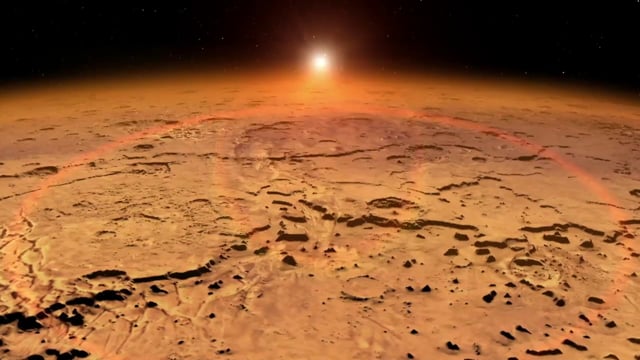
Over the last couple of weeks so much has already been written and said about the Chandrayaan 2 from both technical and non-technical perspectives that it has has made it increasingly difficult to add something new to the ongoing discussion. Despite the bulk of information circulating on the Chandrayaan, I continue to feel concerned about the unscientific comments made by some scientist colleagues and the media. The rumours circulating about the mission have troubled me, while the politicisation of the mission and the vested interests of political leaders have disturbed me. What prompts me to write this piece is the fact that the common citizens of the country have shown so much interest in the mission and that I can articulate some of my own thoughts and concerns upon the theme.
To begin with I would like to address the question regarding the success or failure of Chandrayaan 2. For the last few days many students and friends have asked me this question. I would like them to note that life is not based on a classical binary system, where there are only two states 0 and 1. So you cannot give me a multiple choice question with only two options for the answer. It’s neither completely successful nor is it a complete failure. One can say that it’s acceptably successful.
To appreciate its success, we first need to understand that at the final stage, there were three components: Orbiter, Pragyan and Vikram. Vikram was the lander which was supposed to carry a set of equipments and the Pragyan was the rover which was a vehicle that was supposed to come out of the Vikram lander and move across the surface of the moon and perform a set of experiments. Vikram was also carrying some equipments (usually all the equipment carried by a spacecraft is known as payload) and those equipments were designed to perform another set of experiments. Specifically, Vikram was carrying 3 payloads- ILSA to study seismicity around the landing site or lunar quakes (think in analogy with the earth quakes), ChaSTE to study the variation of temperature with depth from the lunar surface and its thermal conductivity, RAMBHA to study the variation of plasma density and electron density with time at the surface of the moon. In addition, Pragyan the rover was primarily equipped with APXS and LIBS. APXS was designed to detect the major rock-forming elements like, Sodium, Magnesium, Aluminium; and LIBS was designed to determine the abundance of elements. One may note that the applicability of these extremely important experiments were restricted to a small region near the landing site.
It would have been great if the communication was not broken and if we could have obtained output of the above mentioned experiments, but after the communication failure, we hardly have any method to know the outcome of any such experiment (even if an equipment is still functioning). The same is true for the information about what went wrong. All you hear now is just speculation; at this moment, scientists have hardly any way to pinpoint the problem. Further, the probability of reestablishing the communication can be considered to be zero for all practical purposes. So almost for sure, we will not be able to get any result from the experiments planned to be done by the equipment carried by Vikram and Pragyan, but still the mission is successful as the Orbiter(the third component) is orbiting around the moon and constantly observing the moon. It is carrying a larger set of equipments which will perform the experiments for longer time (at least for 1 year in comparison to two weeks for Vikram and Pragyan), and over a longer area (its applicability is not restricted to the nearby areas of the landing site).

Specifically, it’s carrying 8 type of payloads –
(i) Terrain Mapping Camera (TMC 2) which will help us to create a 3D map of the surface of the moon,
(ii) A large area soft X-ray spectrometer (CLASS) which will analyze the X-ray fluorescence spectra of the moon and thus check the availability of Magnesium, Aluminium, Silicon, Calcium, etc. (note the analogy of its outcome with that of APXS and LIBS, and understand that even if we don’t get any result from Pragyan, the mission will not fail completely),
(iii) solar X-ray monitor (XSM) which is a support equipment for CLASS and which will analyze X-rays emitted by the Sun and its corona,
(iv) orbiter high resolution camera (OHRC) which was primarily designed to capture high-resolution images of the landing site, but now it can provide us image of Vikram as well as the lunar surface,
(v) imaging IR spectrometer (IIRS) which is supposed to do mineralogical and volatile mapping of the moon along with the characterisation of water/hydroxyl feature.
(vi) dual frequency synthetic aperture radar (DFSAR) which aims to estimate the amount of water-ice in the polar regions of the moon and to provide a high resolution map of that region along with an estimation of regolith thickness and its distribution,
(vii) atmospheric compositional explorer (CHACE 2) this will continue an experiment initiated during Chandrayaan1 and study the variation, distribution and composition of the exosphere of the moon,
(viii) DFRS experiment setup to study electron density in the Lunar ionosphere and its time variation. Interestingly, many of these experiments will be performed for the first time (i.e., they are not performed during earlier efforts of the other countries and ours). Thus, the payloads present in Orbiter are bound to provide some new information about the moon.
I understand that I have become relatively more technical in the last two paragraphs. We could have circumvented it, but I emphasised on it to clarify that the outcome of the mission could have been better, but the mission has not failed at all. Placing the Orbiter in the desired path was an extremely complex task, and that has been successfully performed by ISRO establishing the mission to be acceptably successful
Things that Bothered Me the Most
I know that science cannot be free of politics and scientists do get involved in politics. Even my childhood hero Prof. Meghnad Saha participated in parliamentary elections and won. He contributed a lot in the early development of science and industrialization policies of India. That’s not bad, but the converse is not true. If politicians try to understand and appreciate science, that will be very good, but the efforts to connect Chandrayaan2 with nationalism, or the connectivity loss issue to Kashmir issue is disgusting. More disgusting is the comment of Mamata Banerjee describing this scientific effort as a tool to misdirect people’s attention from the economic slowdown. Following her, many others commented that a poor country cannot afford the luxury of moon mission in particular and space program in general. They must note that the space program was started very early in India and we were poorer at that time. Chandrayaan2 is not made in a week or a month. It’s a product of many years of sustained effort. It started much before anyone had any knowledge of the present economic slowdown. The credit or discredit of a mission does not go to an individual, it must be shared by all – from Nehru to Modi, Vikram Sarabhai to K Sivan, a technician who retired in 1980 to a scientist who has just joined ISRO in 2019. It’s a continual effort. In this context, I feel more worried when I see many scientists trying to be politically correct rather scientifically correct.
Theatrical performance of the media persons and political leaders do bother me. You can do a drama by wearing spacesuits, but a spacesuit cannot give you license to speak on science. So much nonsense has been spoken over the last many days. Of course, we could not expect much from the journalists, but there are people from whom our expectations were higher.
We expected scientists to behave and comment in a scientific manner, and not to allow media to propagate unscientific news involving the role of Sadguru, Shankaracharya of Puri and the soil of some places of Tamil Nadu where there is a temple visited by Ramanujan. Activities of some of us have not only helped media to prepare spicy news which may lead to enhancement of superstition, it has also posed questions on our training and credibility. Specifically, some of us who don’t have access to any data set, have virtually answered every question asked by the journalists. As a scientist, one should know what he knows and what he does not. An astrophysicist has commented that the calculation of the date of landing was wrong, if landing would have been planned after two days then the communication failure would not have happened. Anyone who has ever done a complex experiment, knows even after taking care of everything, something may go wrong at the end. Making a comments from outside (without having access to all the related information) is easy, but scientifically it does not make any sense. Further, I wonder what has gone wrong with us when I see some of our colleagues speaking to media and smartly providing information which cannot be obtained from the thermal image of Vikram obtained by ISRO. Thermal images are not high-resolution optical images, they don’t reveal all the information about Vikram that you wish to know,
For many, it was yet another festival, but a large number of common citizens, especially school children have shown serious interest in the science behind the rocket launchers and the equipment carried to moon. Many of them were excited about the mission, and felt seriously concerned about the communication failure. This excitement may motivate a large number of sharp young minds to do science and engineering for meaningful purposes; it may help many to think of a scientific career in India and thus drop brain drain; it may even help the class XII students to think of a career not directed towards IT giants.
Benefit of scientific discoveries and technological developments are usually not restricted to a geographical area or a country. If our successful space program helps us to predict the path of a cyclone, that does help Bangladesh, Myanmar, and other neighbours as much as it benefits our own country. So we need to think in a broader perspective. Further, during the live telecast of the expected landing of Vikram, many young students have seen that scientists are just like them. They do laugh and cry, they do feel happy and sad. They are just like you and the converse of the statement is you are just like them. They are not superheroes having any special power. You can also become a scientist in the near future. Just continue with the enthusiasm you have shown; just enjoy science as you have enjoyed the success of ISRO and just love science and its ability to do good things for human beingz as you loved our very own Vikram.
Prof. Anirban Pathak teaches Physics at JIIT, Noida. He is the recipient of the 2017 Shri O.P. Bhasin Award in the field of Electronics and Information Techology.










